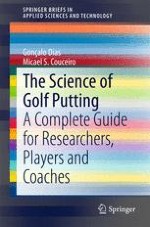2015 | OriginalPaper | Buchkapitel
5. Performance Metrics for the Putting Process
verfasst von : Gonçalo Dias, Micael S. Couceiro
Erschienen in: The Science of Golf Putting
Aktivieren Sie unsere intelligente Suche, um passende Fachinhalte oder Patente zu finden.
Wählen Sie Textabschnitte aus um mit Künstlicher Intelligenz passenden Patente zu finden. powered by
Markieren Sie Textabschnitte, um KI-gestützt weitere passende Inhalte zu finden. powered by
